When it comes to driving traffic, increasing visibility, and generating leads through Google Ads and SEO, having a well-rounded keyword strategy is essential. Many businesses make the mistake of focusing solely on keywords without considering the bigger picture. To truly maximize your return on investment (ROI) and gain a competitive edge, you need a holistic approach. That’s where the three pillars of a successful Google keyword strategy come into play.
In this post, we’ll break down these three pillars—keyword targeting, brand protection, and competitor targeting—and explain how they work together to create an optimized, effective strategy for driving qualified traffic to your website.

The first pillar of a successful Google keyword strategy is keyword targeting. Without the right keywords, your ads and organic content won’t reach the people who are most likely to convert.
What is Keyword Targeting?
Keyword targeting is the practice of choosing specific search terms or phrases that align with what your potential customers are typing into Google. It's all about targeting the right keywords based on user intent, whether they're searching for information, looking to make a purchase, or seeking a service.
How to Effectively Target Keywords
Start by researching both short-tail and long-tail keywords:
Short-tail keywords (e.g., "plumber in Los Angeles") are broad search terms with higher volume but often more competition.
Long-tail keywords (e.g., "emergency plumber in Los Angeles available 24/7") are longer, more specific search phrases that usually have lower competition and higher conversion potential.
Using tools like Google Keyword Planner, SEMrush, and Ahrefs, you can identify keywords that align with your business goals and customer pain points. Search volume and keyword competition should be factors in your decision-making process, but conversion potential is the real goal. After all, you want your traffic to convert into leads and customers!
The second pillar is brand protection. Many businesses overlook this, but it’s crucial for controlling your brand’s presence in search results. Brand protection ensures that your brand appears prominently in search results when people look for your name or related terms.
Why Is Brand Protection Important?
Without brand protection, competitors could outbid you on your branded terms and potentially steal your traffic. By bidding on your brand name and other critical terms, you safeguard your visibility and ensure that your ads appear at the top of search results when people look for your business. This not only helps you maintain visibility but also ensures that your organic listings aren’t pushed down by competitors who may bid on your brand name.
How to Implement
Brand Protection in Your Strategy
- Bid on your brand name in Google Ads to secure top spots in paid search results.
- Ensure that your brand keywords are targeted both in ads and in SEO content like meta descriptions, title tags, and site copy.
Brand protection isn’t just about preventing competitors from bidding on your name. It also helps you retain control over your customer experience and guides potential clients directly to your website, instead of third-party sites.
The third pillar is competitor targeting. Understanding and leveraging your competitors’ keyword strategy can give you a significant edge in the market.
What is Competitor Targeting?
Competitor targeting involves researching the keywords that your competitors are ranking for, then bidding on those keywords to capture their audience. This is a form of competitive intelligence that allows you to reach customers who may already be considering your competitors.
How to Implement Competitor Targeting
To target competitors effectively, you need to perform competitive keyword research. Tools like SEMrush, SpyFu, and Ahrefs allow you to uncover the keywords your competitors are using and identify any gaps you can exploit. Once you know which keywords your competitors rank for, you can create more compelling ads and content to capture their traffic.
Here are some ways to make the most of competitor targeting:
Create more relevant, engaging ad copy than your competitors.
Use competitive keyword bidding to appear alongside competitor ads, enticing their potential customers to click on your ads.
Offer exclusive promotions or unique value propositions to differentiate your brand and win over their audience.

The key to a successful Google keyword strategy is integrating all three pillars into a cohesive plan. Here's how they work together:
Keyword Targeting ensures you’re reaching the right audience with the right search terms.
Brand Protection ensures you control your visibility and prevent competitors from bidding on your name.
Competitor Targeting allows you to capture market share from your competitors by targeting the keywords they’re ranking for.
When you combine smart keyword targeting, brand protection, and competitor targeting, you create a balanced strategy that not only drives traffic but also maximizes ROI and competitive advantage. It’s about being proactive and strategic in how you approach Google Ads and SEO to stay ahead of the competition.
Building a Google keyword strategy isn’t just about picking keywords at random or hoping for the best. It requires careful planning and execution. By focusing on these 3 pillars—keyword targeting, brand protection, and competitor targeting—you’ll be able to create a keyword strategy that delivers higher traffic, greater visibility, and a stronger return on investment.
Whether you’re running Google Ads campaigns or working on SEO for organic growth, these three pillars will provide a structured, strategic approach to ensure your efforts are maximizing results.
Ready to optimize your Google keyword strategy and dominate your market? Start with these three pillars, and watch your online presence grow!
